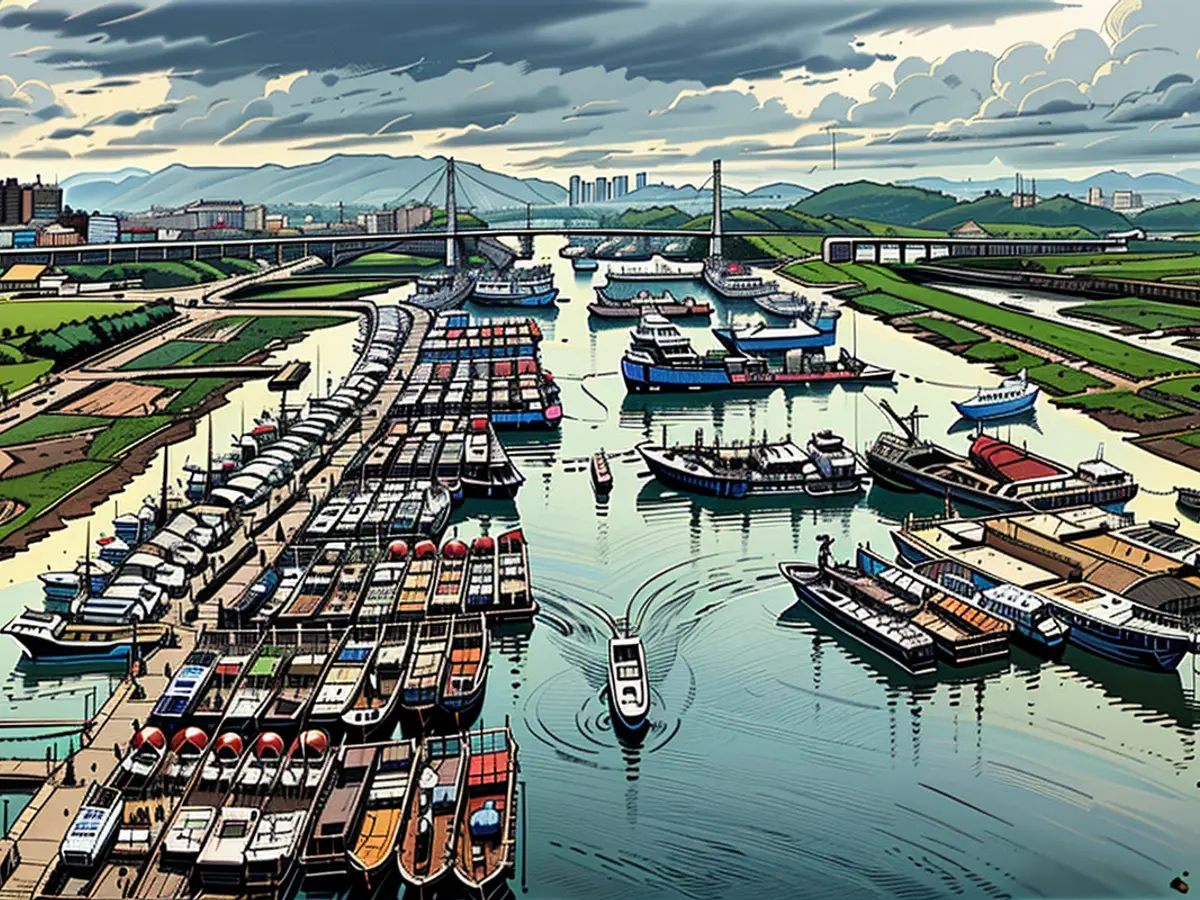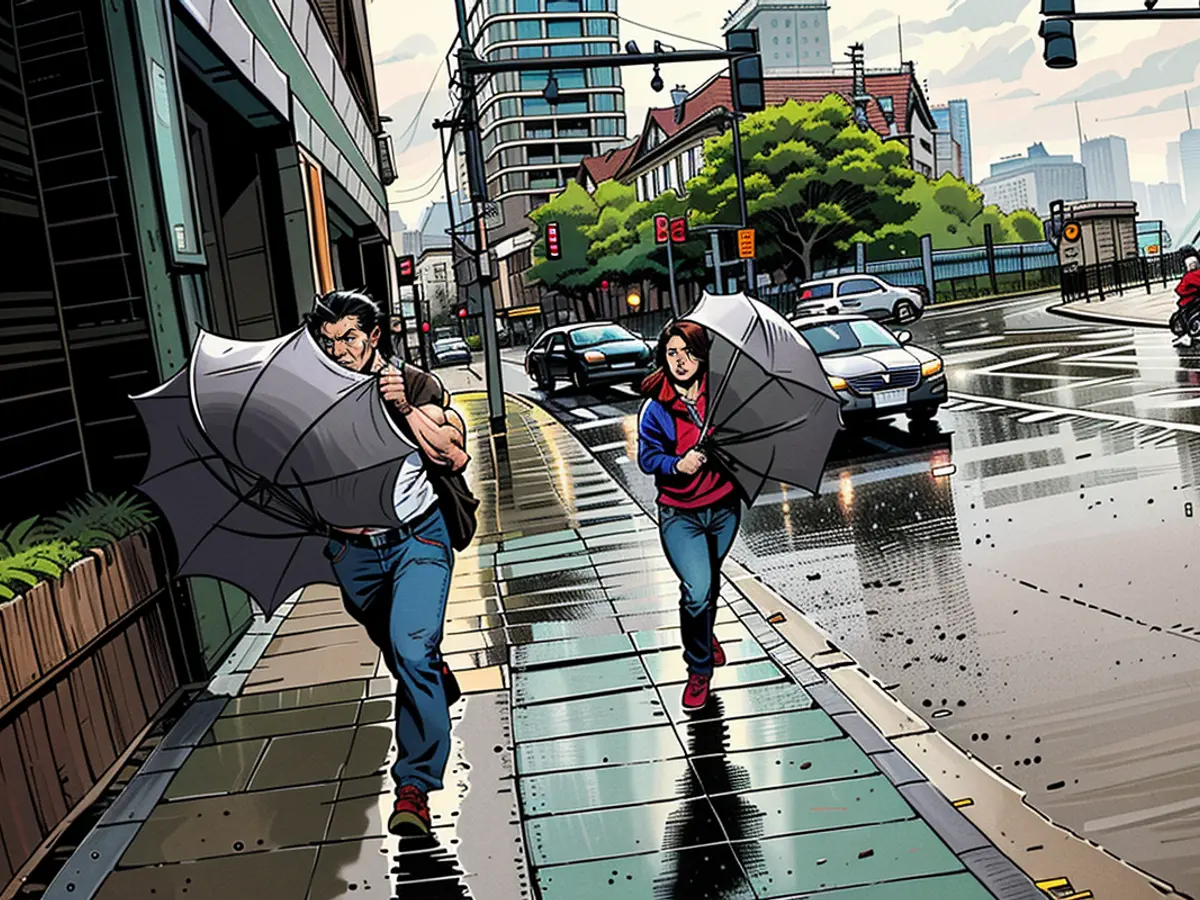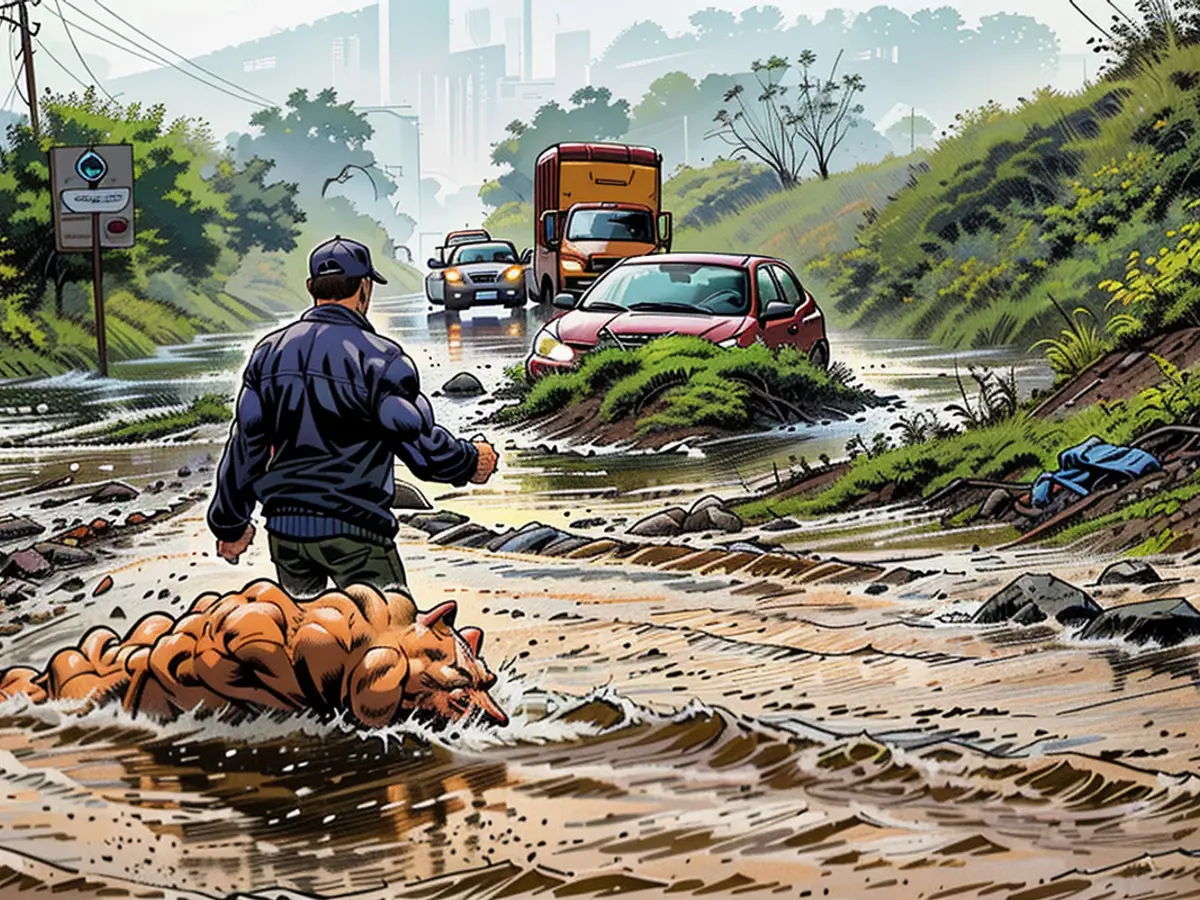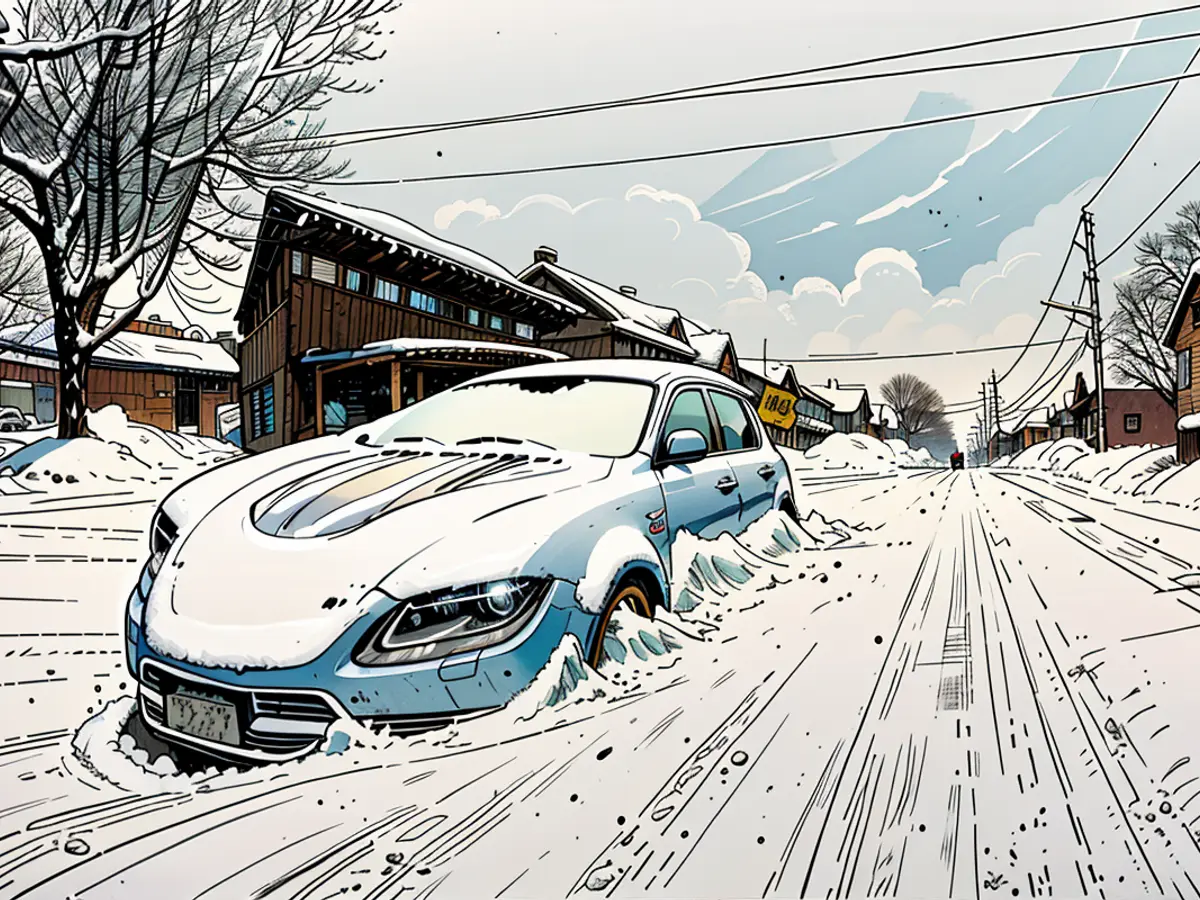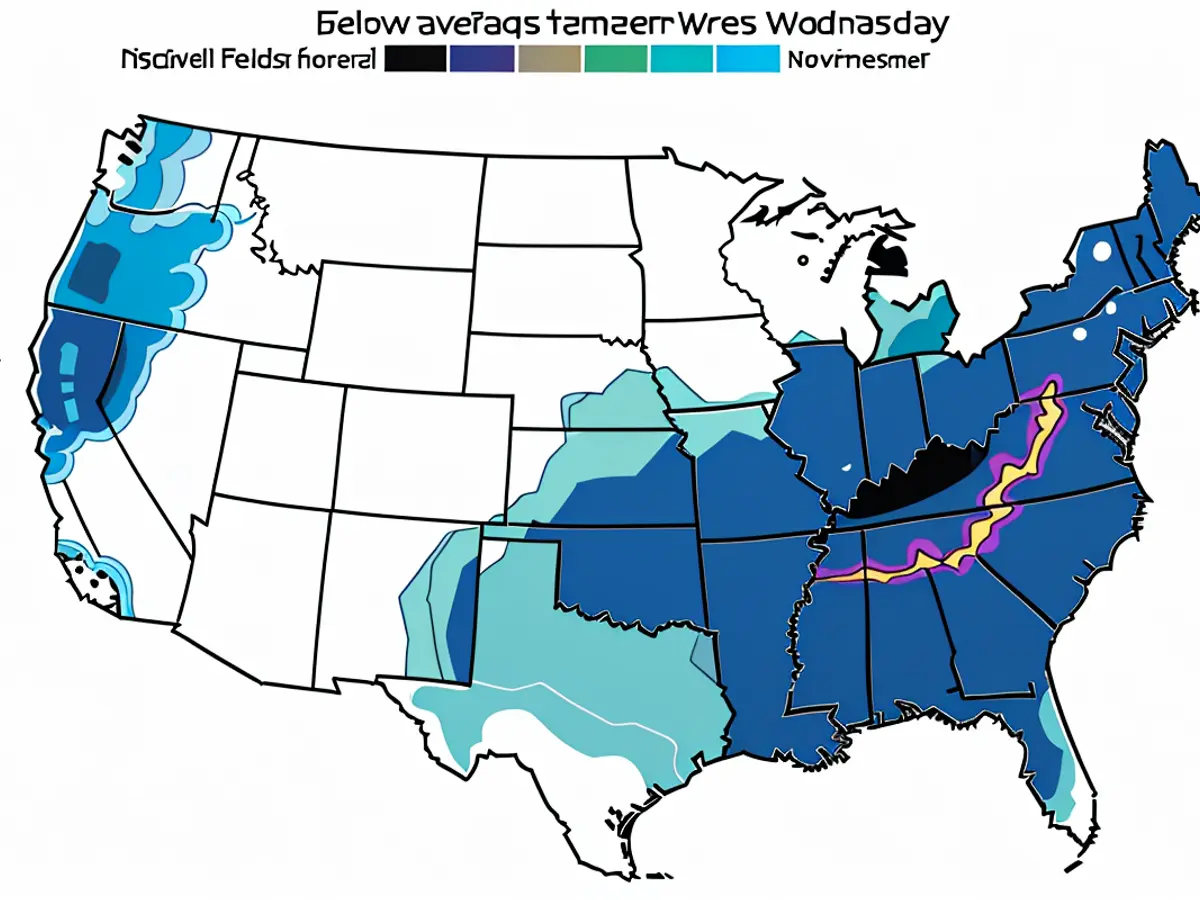Shanghai confronts what China decribes as its most powerful storm in seven decades.
Typhoon Bebinca touched down in a manufacturing district situated to the southeast of a city with a population of 25 million at roughly 7:30 a.m. local time. As per the Joint Typhoon Warning Center (JTWC), the storm featured winds of up to 130 kilometers per hour (80 mph), the equivalent of a Category 1 Atlantic hurricane.
The China Meteorological Administration noted wind speeds of 151 kph (94 mph) in the vicinity of the typhoon's eye when it hit shore, making it the strongest storm to hit Shanghai since 1949, as stated by state media.
On Monday, the administration issued a severe red typhoon warning, their most intense alert, alerting residents to anticipate powerful winds, heavy rainfall, and coastal flooding across extensive regions of eastern China.
The potent cyclone has disrupted holiday plans for many during the Mid-Autumn festival, a three-day national celebration that commenced on Sunday. All flights at Shanghai's two major airports have been terminated since 8 p.m. Sunday. The city halted its ferry services, suspended specific train routes, and closed ports, bridges, and highways on Monday.
Numerous attractions in the city, like Shanghai Disney Resort, also closed their doors on Monday. Videos on Douyin, China's TikTok equivalent, demonstrate employees using tape to secure trash bins to fences in the park.
By midnight Monday, more than 414,000 individuals in Shanghai had been relocated to safer locations, with exhibition halls and school gyms serving as temporary shelters, according to CCTV. Similar precautions were established in neighboring Zhejiang and Jiangsu provinces. Across the region, more than 1,600 flights had been grounded by Monday afternoon, reported CCTV.
Chinese social media users from Shanghai reported power and water outages on Monday morning, prompting many to stock up on food and essentials over the weekend.
It is anticipated that Bebinca will weaken into a tropical storm as it continues inland toward the west.
Bebinca forms the second significant storm to hit China this month, following Super Typhoon Yagi, which emerged as the world's second most powerful tropical cyclone of the year to date, with damages in the southern Hainan province claiming four lives upon its September 6 landfall, bearing maximum sustained winds of 230 kph (140 mph), equivalent to a Category 4 Atlantic hurricane.
Researchers have found that the intensification of storms is being accelerated by warmer ocean temperatures resulting from human-induced climate change.
Historically, Shanghai has seldom been in the direct line of sight for powerful typhoons, which usually strike further south in China. Prior to Bebinca, the city had experienced direct hits from just two typhoons, both in 1949 and 2022, along with a few intense tropical storms, according to records from the China Meteorological Administration.
This article has been updated with additional facts.
The heavy rainfall and strong winds from Typhoon Bebinca made it necessary for residents to stay indoors and monitor the weather closely. Due to the storm's impact, many decided to postpone their Mid-Autumn festival celebrations.
